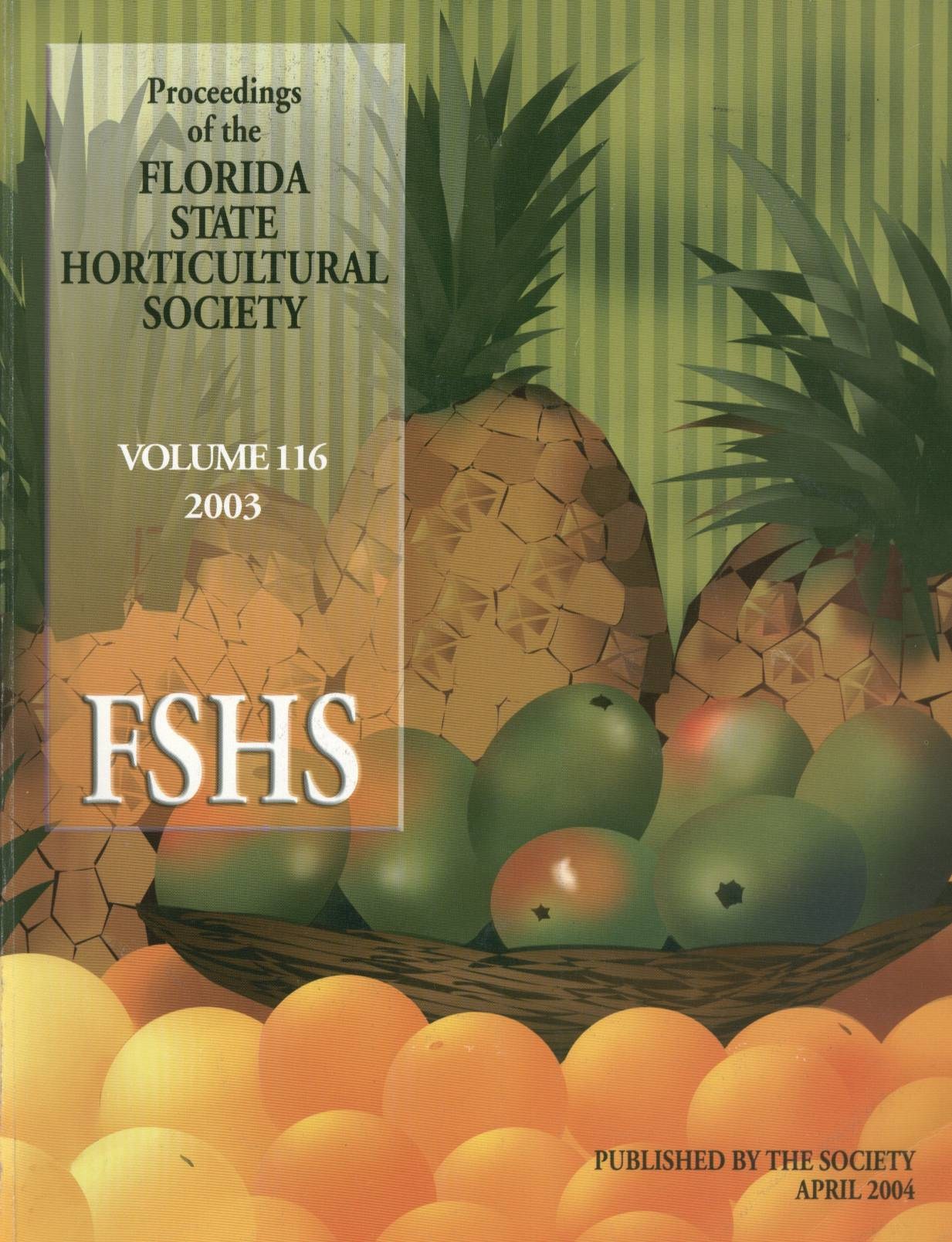Abstract
The Montreal Protocol of 1991 and its 1992 amendment, categorized methyl bromide as an ozone depleting chemical and required that all production, importation, and use of substance in U.S. must be phased out by 2005. Methyl iodide (TM-42501), a nonionizing chemical, was selected to determine effectiveness for control of soil borne plant pathogens. Four soil fumigants in six treatments were evaluated for control of soil-borne Rhizoctonia and root-knot nematode, Amaranths (broad leaf), yellow nutsedge, grasses, and for effects on fruit yield: 1)TM-425 + chloropicrin (PIC) at 300 lb/acre, 2) TM-425 + PIC + methyl-bromide at 300 lb/acre, 3) TM-425 at 100 lb/acre, 4) TM-425 at 175 lb/acre, 5) Telone C35 at 35 gal, and 6) PIC at 137 lb/acre. A field trial was installed on 29 Jan. 2002 at a site on sandy loam soil in central Florida. Soil beds were formed 48 inches wide on 6-ft centers. Each plot was 500 ft long, replicated five times. Fumigants were injected through three shanks, 9 inches apart, at depth of 4 inches with 1.5-mil polyethylene film placed over the beds. After 7 days, plastic was perforated to allow venting and 12 days later tomato cultivar 'Asgrow Florida 47' transplants were planted at spacing of 24 inches in row on 29 Mar. 2002. All of the fruit were harvested from 30 plants per plot. Following fruit harvest, 10 plants per plot were pulled for root evaluation. TM-425, TM-425 plus PIC, and TM-425 plus MB plus PIC provided statistically significant control of root rot and root knot nematode compared with the untreated control. TM-425, TM-425 plus PIC, and TM-425 plus MB plus PIC provided significantly more large fruit compared with the control.

